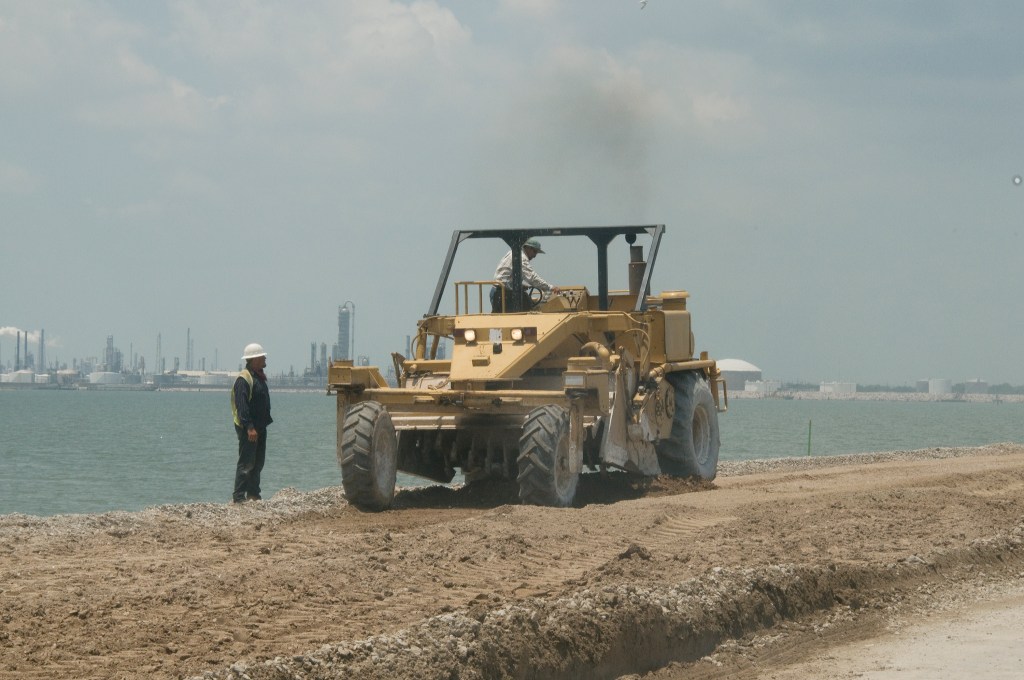The record-setting 2017 hurricane season is drawing to a close, after three catastrophic storms left billions in damage in their wake. But a long road of recovery still lies ahead — and as they tackle that problem, leaders are looking beyond recovery and rebuilding to the long-run future, and wrestling with the big questions: how can communities be ready for natural disaster in a changing world?
New York After Sandy
Building resilience takes time. This month marks the five-year anniversary of 2012’s Hurricane Sandy, and in New York City, authorities are still just getting started on a major effort to toughen the city against the next big one, whenever it comes. The New York Times took a look at that effort (see: “Five Years After Sandy, Are We Better Prepared?” by Patrick McGeehan and Winnie Hu). “Five years after Hurricane Sandy struck on Oct. 29, 2012, much of the region’s inundated infrastructure has been repaired and some of it has been improved,” the Times reported. “But most of the big plans to stormproof New York City remain just that: plans. And throughout the planning, the city has continued to advance toward the water, with glass high-rises stretching across the riverfront in Queens, Brooklyn and the Far West Side of Manhattan.”
Flood barriers have been installed at some subways and some critical power facilities have been elevated, the paper reported. But the proposed “Big U” flood berm system around lower Manhattan is still on the drawing board, and work on city public housing facilities is still in the early stages.
The New York Daily News, whose real-time coverage on the night of Sandy’s landfall was exemplary, is also taking a look at the state of recovery and resilience efforts (see: “NYC still behind on storm-proofing, restoration projects five years after Hurricane Sandy,” by Greg B. Smith). “Some big projects have wrapped up,” the paper reported. “The $341 million FEMA-funded replacement of Rockaway Beach’s wooden boardwalk with a concrete update is complete. So is the flood-proofing of the massive E. 13th St. Con Edison substation that blew out during the storm. And the city last year activated a $250 million drinking water tunnel connecting Brooklyn and Staten Island to ensure supply is not interrupted in the event of another deluge. But many more projects have fallen significantly behind schedule.”
In in the borough of Staten Island, resiliency means retreat, reported Mother Jones (see: “Humans Used to Live Here. Then Sandy Happened. Now It Is Being Reclaimed by Nature,” by Nathalie Baptiste and Mark Helenowski). In the Ocean Breeze neighborhood, “most of the homes have been torn down, and a few are boarded up waiting to be demolished,” the magazine reported. “The homes that do remain are surrounded by empty plots of land where wild turkeys wander. Unlike many other New York victims of Sandy who have rebuilt their communities, those from these neighborhoods knew that rebuilding was not the best option.”
Toughening Texas
With recovery from Hurricane Harvey still in the early stages, Texas leaders are looking to the future with ambitious proposals for reinforcing their shoreline and upgrading their infrastructure and housing stock. The Houston Chronicle had this report (see: “Texas-size $61 billion Harvey plan includes ‘Ike Dike,’ new reservoirs, buyouts,” by Mike Ward and Kevin Diaz). “A nearly $61 billion state plan to rebuild Houston and the Texas coast after Hurricane Harvey includes funding for three ‘coastal spines’ to control flooding, new reservoirs and buyouts of thousands of properties,” the paper reported. “About 60 percent of the funding would go to ‘future proof’ flood-prone areas and 33 percent would pay for buy-outs and elevating buildings in low-lying regions stretching roughly from Rockport to the Beaumont area and parts of Southeast Texas where Harvey hit hardest.”
The Texas Tribune had more detail on the “Ike Dike” proposal in September (see: “Post-Harvey, Houston officials hope Congress is up for funding Ike Dike,” by Kiah Collier and Neena Satija). “We cannot talk about rebuilding” from Harvey “if we do not build the coastal spine,” said Houston Mayor Sylvester Turner. Texas A&M University’s home page for the Ike Dike proposal is here (see: “Ike Dike: A coastal barrier protecting the Houston/Galveston area from storm surge”). But as the Texas Tribune pointed out, “the Ike Dike would only protect coastal areas from catastrophic storm surge; it would do nothing to prevent flooding damage from torrential rain, which is almost entirely responsible for the damage Houstonians suffered from Harvey.”
In any case, Texas politicians know that getting Federal help for their efforts is a hard sell, the Chronicle reported (see: “Abbott: Don’t expect $61 billion to be approved in one shot,” by Mike Ward and Kevin Diaz). “Sen. John Cornyn expressed fresh concerns Wednesday about the fate over a nearly $61 billion request to help Texas rebuild after Hurricane Harvey as Gov. Greg Abbott warned that approval might not come as fast as he expected,” the paper reported. “Cornyn, Texas’ senior senator and the No. 2 Republican in the Senate, expressed new concerns about the road ahead for the request. He criticized the Trump administration’s delay in funding the state’s full requests for aid, which he said could get caught in the year-end spending battles of Congress.”
